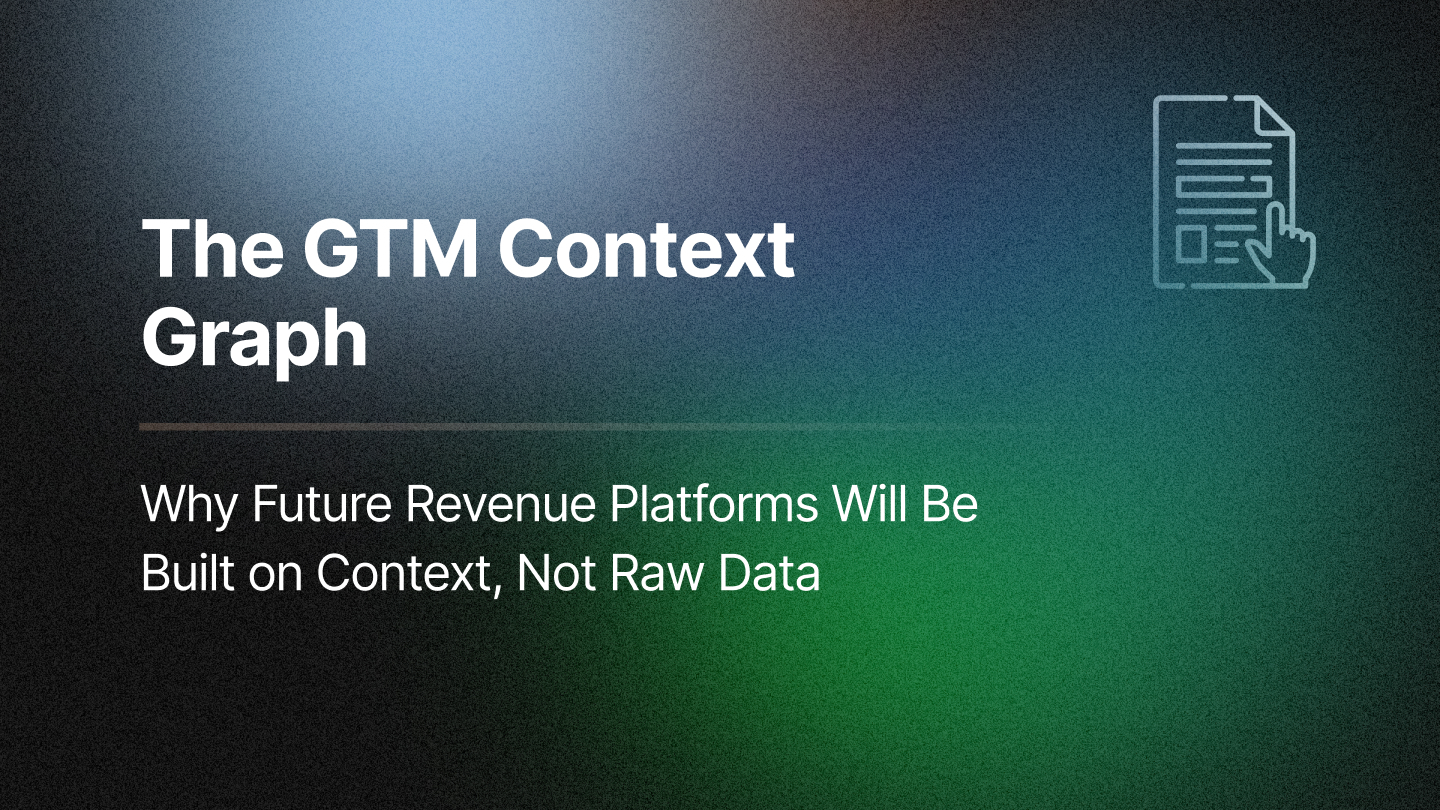For years, we’ve warned about technical debt, those shortcuts in code or infrastructure that seem convenient in the moment but ultimately incur real costs over time. But there’s a quieter, less talked-about threat that’s now eroding the speed and impact of go-to-market teams everywhere.
That threat is data debt.
Unlike tech debt, data debt doesn’t trigger alerts or crash systems. It seeps into dashboards. It delays decisions. It turns confident operators into spreadsheet sleuths, trying to reconcile CRM records, marketing automation syncs, and campaign naming chaos. Most of the time, you don’t even notice it until your forecasts are off, your lead handoffs are broken, or your campaigns fall flat.
And by then, the damage is already done.
The Hidden Cost Beneath the Stack
Every revenue team lives in a sea of tools Salesforce, Marketo, HubSpot, LinkedIn Ads, Outreach, attribution platforms, and BI tools. They promise automation, visibility, and control. But they only work as well as the data that flows between them.
And that’s where things unravel.
A lead comes in from a paid campaign. Their job title is listed as “Sr Dir Mktg” in one platform, “Senior Marketing Director” in another, and completely missing in a third. Their lead source is tagged as “Webinar” in HubSpot, “Partner” in Salesforce, and “Unknown” in LinkedIn. Their engagement score gets inflated, their lifecycle stage misfires, and by the time a sales rep sees them, they’re treated like a high-fit MQL—except… they’re not.
Multiply that by thousands of records across dozens of campaigns, and you’re not just dealing with messy data. You’re dealing with a systemic operational liability.
The issue isn’t just cosmetic. Data debt impacts revenue every day. Reporting cycles slow down. Pipeline forecasts become guesswork. Paid media spend gets misallocated. And teams that should be running growth plays are stuck running cleanup jobs.
How It Slows Everyone Down
One of the most frustrating aspects of data debt is that it doesn’t appear all at once. It’s slow. Creeping. Normalized.
You start by losing confidence in your dashboards. Then, marketing and sales start arguing about lead quality. Then pipeline velocity looks wrong. Soon, your ops team is spending more time reconciling reports than running strategy. Even leadership loses faith in the data and starts relying on anecdote over insight.
The symptoms are subtle but costly:
- Campaigns that don’t get credit for influencing pipeline
- Lifecycle reports that contradict CRM exports
- Forecasts that swing wildly between platforms
- SDRs following up on leads that were already disqualified
Over time, data debt becomes the silent killer of GTM agility.
It’s Not a Cleanup Project—It’s an Operating Model
The temptation is to treat data debt like spring cleaning: run a dedupe, fix some fields, align lifecycle stages, and call it done. But that’s like applying a coat of paint to a house with foundational cracks.
Fixing data debt isn’t a project. It’s a discipline.
It starts with alignment: Do your systems agree on what “MQL” means? Do campaign names follow a naming convention that allows for roll-up reporting? Is lead source tracking designed for scale and not just your latest webinar?
Then it requires prioritization: Not all bad data matters. Focus on the friction points that create the most drag, such as lead source ambiguity, inconsistent funnel stages, stale segmentation logic. And finally, it demands automation: Rules are useful, but today’s best teams are pairing deterministic cleanup with AI-driven enrichment and predictive scoring. That’s how you move from reactive cleanup to proactive intelligence.
The Strategic Upside of Getting It Right
Clean data doesn’t just make dashboards prettier. It gives your entire GTM team confidence.
Marketing sees which campaigns actually move pipeline. Sales trusts the quality of what’s being handed off. RevOps spends less time explaining reports and more time optimizing the funnel. And leadership? They finally get what they’ve always wanted: a single source of truth that’s accurate, timely, and aligned.
More importantly, when your data layer is healthy, you can do the high-leverage work:
- Launch campaigns based on real buying behavior
- Forecast with precision, not instinct
- Automate handoffs and lifecycle tracking
- Drive strategic conversations, not tactical firefighting
This is what operational excellence looks like. And in a world of increasing complexity, it’s your competitive edge.
Final Word: Debt Always Comes Due
Data debt doesn’t make headlines. It doesn’t cause outages. But if you let it accumulate, it will quietly drain your team’s time, budget, and trust.
The good news? It’s fixable.
And the best time to start addressing it was yesterday.
The second-best time? Right now.
Related Blogs








